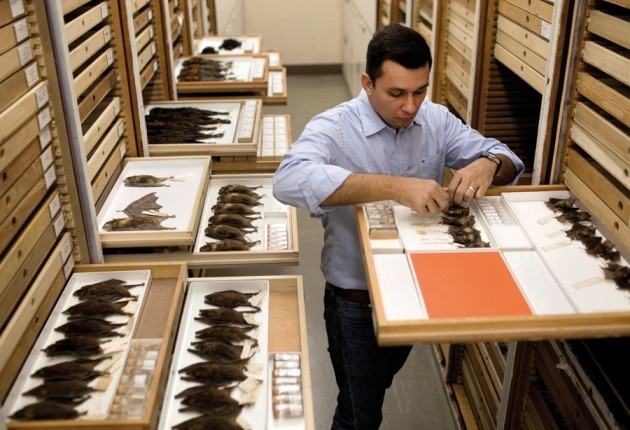
- Select a language for the TTS:
- UK English Female
- UK English Male
- US English Female
- US English Male
- Australian Female
- Australian Male
- Language selected: (auto detect) - EN
Play all audios:
In all my years of watching dance, never has a performer broken the fourth wall to hand me a glass of Champagne, let alone an entire bottle. But that’s exactly what happened last week at
BodyVox, and I’m certainly not complaining. The Champagne toast came during the fantastical comedic disintegration of an evening under the spell of BodyVox choreographers Jamey Hampton and
Ashley Roland in their reimagining of Shakespeare’s _Romeo and Juliet_ and _A Midsummer Night’s Dream. _The double bill, titled _Death and Delight, was _performed by eleven dancers,
including Hampton and Roland_._ The fairies from _A Midsummer Night’s Dream _handed out glasses of Champagne to the audience as part of the wedding celebrations. I happened to be in the
right place at the right time when Hampton was looking to hand off an extra bottle of bubbly. The juxtaposition of these two Shakespearean tales was perfect. As in real life, you can’t have
the sweet without the sour. Too much tragedy — say, two teenagers killing themselves for love and warring families — might have sent us all over the edge, especially at this particularly
troubled moment in time. But paired with the sheer ridiculousness of whatever _A Midsummer Night’s Dream_ was, I was able to leave the theater without spiraling into depression, floating
home instead on the effervescence of the bubbly. The brilliant pianists Yoko Greeney and Maria Garcia, who accompanied the dances live, further elevated the experience. They played
Prokofiev’s and Mendelssohn’s scores while sharing the keys on the same piano bench. I wasn’t expecting them to share a single piano, and honestly, I’m not sure how they managed it. A true
analysis of the feat would require more musical knowledge than I possess, so I’m in awe. One thing I love about BodyVox performances is the welcoming, relaxed atmosphere that directors
Hampton and Roland build into everything they do. So often, especially in _A Midsummer Night’s Dream_, it feels like I’m watching an improvised skit in a Victorian parlor, thrown together by
a group of lifelong friends gathered together for the holidays. Costumes pulled from the attic, besties perched side by side at the piano egging each other on, theatrical antics galore —
all pomp and circumstance joyfully tossed aside. Gender roles are flipped, conventions let go: It’s joyful, inclusive, unpretentious, and delightfully entertaining. It feels like we are part
of the action and the story, not just watching from the outside. Hampton, in particular, is a brilliant emcee. His charm comes from his wholesomeness, his talent for storytelling, and his
easy familiarity with everyone in the room. He’s naturally funny, and a pleasure to listen to. Sponsor BodyVox excels at choreographed comedy. When the dancers embrace their unique artistic
impulses, the result is endlessly hilarious and weird. However, when their choreography leans towards typical ballet or contemporary ballet styles, moves repeated by dancers worldwide ad
nauseam, it can feel stilted or self-conscious, less original, and less interesting to watch. Sparks fly when they stick to their home-cooked version of comedy, which is full of details and
blends theatricality, physical humor, and dance. This style incorporates a little bit of everything — from slapstick to satire, absurdism to farce, parody, and even a touch of dark humor.
That’s when their brilliance truly shines, and I find myself much more drawn to this distinctive expression. When this aspect is dominant in the choreography, the tone of the performances
feels spontaneous, and genuinely funny, reminiscent of the spirit of old-style comedy, or the experience of riding a roller coaster in a fun house at the fair. A true sense of invention
sparks _Death and Delight_, which closed its run May 17. Projected quotes from the two stories helped frame and move the story along. Color-coded outfits made family allegiances instantly
readable in _Romeo and Juliet_. Both plays’ sets were minimal but imaginative: a short hedge of fake grass stretched along the front of the stage to show a forest for _Midsummer_, along with
three small lighted trees “planted” on stage that grew into projections of giant trees behind them. I also loved how the dancers became inanimate objects or invisible forces — benches,
beds, or the energy that moved Romeo and Juliet toward each other. The cross-dressing was also brilliantly performed. Watching the dancers embody their ideas of masculinity or femininity was
very funny and weirdly insightful. I particularly loved the fairies, whose placement throughout _Midsummer_ and on the stage was random, weird, and nonsensical. They wore jackets covered in
forest debris — leaves, flowers, twigs — and jingle bells, and they went around shimmying their shoulders, shaking the bells while locking eyes with us and grinning. I’m laughing now,
remembering them. There were so many new ideas in Hampton and Roland’s retelling of stories we’ve all heard before: It felt like a far more entertaining version of Cliff Notes. I just sat
back and soaked in the bells, the oddball characters, and all the other silly strangeness that Hampton and Roland cooked up purely for our amusement. And accompanied by the beautiful music
of pianists Maria Garcia and Yoko Greeney, the experience was full and layered. Sponsor Nothing feels particularly funny in the world right now, so I was more than happy to lean into the
absurdity, joy, and total weirdness of it all. _Death and Delight_ gave us a chance to laugh, celebrate, and float home a little lighter.









